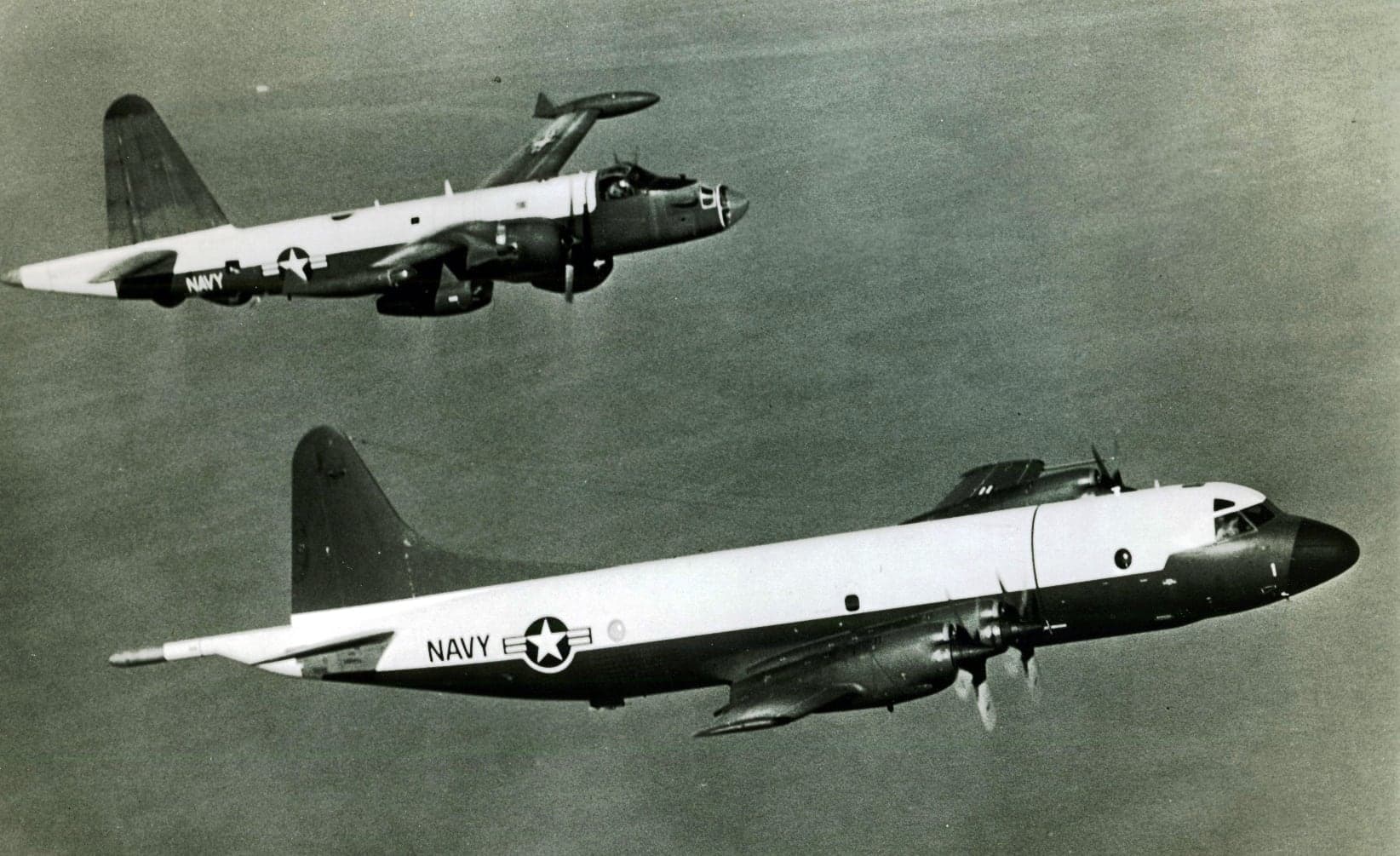The P-8 Has Largely Replaced the P-3, But It’s Unlikely to Match the P-3’s Historic Resume
Author’s Note: We couldn’t fit everything that needed to be said about the long-serving P-3 Orion into just one article, so look for a companion piece with trivia, anecdotes, and more tasty pics- coming soon to an Avgeekery.com near you!
On 19 August 1958 a new Lockheed aircraft flew for the first time. It looked a little bit weird, with a long boom protruding from the tail and wings that seemed too short to support its bulbous fuselage. Powered by four Allison T56 turboprop engines (a winning formula for Lockheed) turning Hamilton Standard 54H60-77 four bladed propellers, the aircraft was derived from a new propliner Lockheed was also developing. The aircraft was intended to replace both the Lockheed P2V Neptune maritime patrol aircraft and the Martin P5M Marlin patrol flying boat. The propliner would go on to become the L-188 Electra. The patrol aircraft became the P3V-1 Orion.

Building a Better Sub Killer
The first YP3V-1 was actually the third L-188 Electra built by Lockheed. Though clearly based on the Electra, the Orion was quite different structurally when the first fully modified prototype flew on 25 November 1959. A shortened forward fuselage with internal bomb bay and underwing pylons for additional weapons were some of the visual cues. Internally the Orion was beefed up and built to withstand the different stresses of low altitude maneuvering associated with anti-submarine warfare (ASW). The slippery shape of the Orion, along with those powerful T56 engines, helped the Orion to be either one of the, or the outright fastest turboprop aircraft of the day- capable of 411 knots (473 miles per hour). Later in life the P-3C set a few records too.

First PATRONs on the Bus
For a short time the Orion was designated P3V-1. The first production Orion flew on 15 April 1961. During August of 1962, the first squadrons to receive the new patrol aircraft, Patrol Squadron (PATRON) EIGHT (VP-8) Tigers and VP-44 Golden Pelicans, began flying them from Naval Air Station (NAS) Patuxent River where they were based in those days. When in 1962 the aircraft designation system was overhauled, P3V-1s became P-3As. Some of the first of many missions Orions flew took place during October of 1962 during the Cuban Missile Crisis. VP-8 P-3A Orions flew low-level high-speed blockade patrols over the shipping lanes to and from Cuba. Right from the beginning and still to this day, a major part of the P-3s job was “rigging”, or photographing targets and contacts.

You Call We Haul- Warts and All
Common design characteristics of the anti-submarine/maritime patrol Orion variants include the dorsal internal bomb bay just forward of the wing leading edge for internal stowage of up to eight conventional or nuclear warhead aerial torpedoes or nuclear depth charges, up to ten underwing pylons for carrying various missiles, rockets, mines, bombs, or other ordnance, and the 52 dorsal sonobuoy chutes located just aft of the wing trailing edge. As Orions have been upgraded/reworked/reassigned/retasked over their service lives, they have sprouted all manner of lumps, bumps, and blades associated with their various sensor systems and modifications. But all ASW Orions are equipped with the triad of ASW sensors: Radar, Sonar, and MAD.

Winning at Hide and Seek
P-3 Orion radar systems are equipped with both forward and aft radar antennae. The aft antenna is located under the rudder at the base of the tail boom; the forward antenna is mounted in the nose radome. The sonar capability is achieved through sonobuoys which are ejected from the chutes on the underside of the aircraft. MAD, or Magnetic Anomaly Detection, is essentially a magnetometer capable of sensing the change in the earth’s magnetic field (due to the presence of a large metal object- like a submerged submarine) in proximity to the aircraft. Due to its high sensitivity, the MAD sensor is mounted at the end of that fiberglass tail boom, also called a tail stinger or MAD boom.

It Takes a Crew. An Aircrew.
Today US Navy P-3 Orion crews generally consist of a pilot (usually the Patrol Plane Commander or PPC), two rotating co-pilots (PP2P and PP3P), and an enlisted flight engineer (FE) on the flight deck. Back in the “tube” are the tactical coordinator (PPTC or TACCO- sometimes the PPC) and navigator/communicator (PPNC or NAVCOM), both of whom are Naval Flight Officers (NFOs). Also riding in the mission compartment are another enlisted flight engineer (FE) or inflight technician, and three enlisted Aviation Antisubmarine Warfare Operators (AWs) or SENSOs- SS-1 and SS-2 who primarily process data from acoustic sensors (sonobuoys) and SS-3 who processes data from radar, MAD, the Forward Looking Infrared (FLIR) mounted in a retractable turret under the nose radome, and other specialized sensors. Depending on mission parameters crews, crew sizes and compositions often vary. Nominally a combat aircrew consists of 11 personnel.










